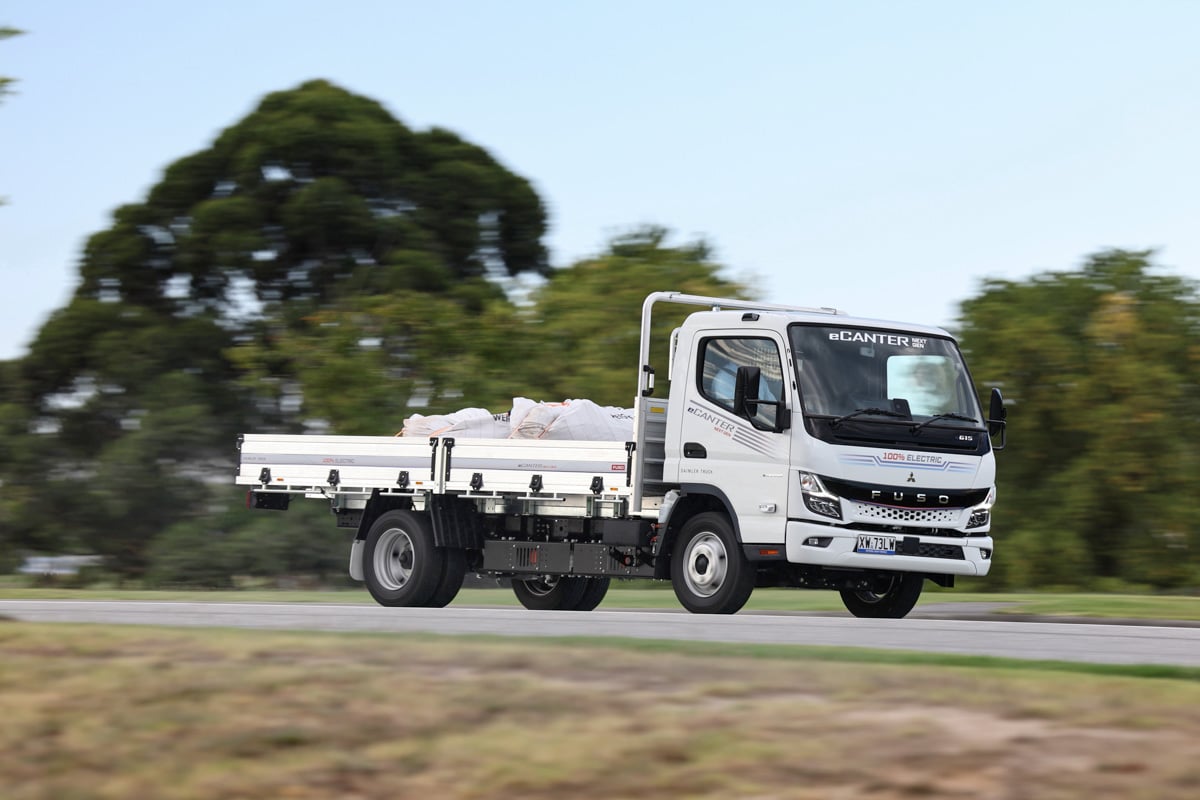The development of this next generation of electric vehicles from Fuso, has taken key learnings from the earlier generations, and this is the third iteration of the electric light duty truck which PowerTorque has had a chance to drive, and the major steps forward for eCanter at each step are very clear.
The basic specifications of the eCanters includes all of those, outside of the driveline, offered in the existing fossil fuel vehicles that are on the market. Nothing has been subtracted from the specification purely because it is a different powertrain.
The payload available on the eCanter varies from 500kg with one battery on the lightest truck up to a 4.5 tonne GVM with a body where the payload is around 600-700kg. When you go up to six tonne GVM, there’s a payload of around 2.5 tonnes. Each battery weighs roughly 500kg, so moving from two to three batteries will reduce payload by around 500kg.
The other side of a payload calculation is the fact that the range is changing as you add each battery (there’s a choice between one and three). Each extra battery will increase range by, at least, 100km. As a rough rule of thumb one battery limits range to just over 100km, with two batteries that’s 200km and with three, 300km.
The caveat here is, of course, driving style. A smooth and frugal driver will get much further and someone who goes hard and is constantly on and off the brakes, is going to get no more than the projected range.
Fuso expect the eCanter sweet spot will be around the six tonne GVM model, which offers enough payload to make it more viable and also offers the choices around batteries. An operator can choose to go with one battery and get more payload, if they concentrate on city centre deliveries and only need 100km plus range.
If they want more range the second battery doubles that range, but knocks off 500 kg of payload and a third battery gets a much better range but further compromises payload. You pays your money and takes your choice.
The big ticket item in the move to this second generation of eCanter is the inclusion in the design of the eAxle concept. This is a technology which makes logical sense and we can expect it to roll out across all truck designs into the future.
However, currently Fuso and Mercedes Benz are the only brands offering this kind of technology in Australia. The eAxle is, of course, heavier than a conventional differential, but does allow for more flexible weight distribution towards the front of the vehicle.
Because this removes the need for a drive shaft from the motor/engine under the cab, chassis real estate becomes available allowing the batteries to be mounted well within the perimeter of the vehicle.
This mitigates the safety scenario where there is a danger of a battery cell being ruptured in a side-on collision, and a risk of fire. The extra space available on the chassis is also going to give bodybuilders more room to bring a design down beneath the main body level if required.
The eCanter is fitted with thermally controlled battery packs, with cooling liquid lines in the battery pack itself, integral in the structure of the battery packs.
Story with thanks to Power Torque




